9.12.3: Storms
- Page ID
- 11056
Storms
Storms produce both large waves and strong, irregular currents. Combined waves and currents produce unique deposits that can be used to recognize ancient storms in a marine sequence. Storms generally start far from shore and get stronger at the shoreline through time. Then they either die out or move on. Thus, near shorelines, storms tend to start out with low energy flows, increase in flow speed until they are erosional (if strong enough) and then decrease back to lower energy flows. For example, sharp crested wave ripples might mark the start of a storm, then transition into round crested wave ripples, followed by cross stratification due to large waves and strong currents, followed by erosion. As the storm wanes, the coarsest sediment would be deposited, then finer sand deposited by waves and currents, and then wave ripples, e.g. the reverse of the sedimentary structures seen as the storm approaches. There is usually little sediment being deposited at the beginning of a storm because not much sediment has been eroded from shallower water yet and flow speeds are increasing through time. Thus, there is usually no record of the first half of a storm sequence in the rock record. Only the second half usually gets preserved. Storm deposits almost always consist of an erosion surface with sediment of decreasing grain sizes upward - like turbidites, but with different sedimentary structures.
Hummocky Cross Stratification (HCS)
The cross stratification that is deposited as a combination of strong currents and large waves is unique to storms (and is found only in medium to fine sands). It is called hummocky cross stratification (HCS) and swaley cross stratification. When currents are washing eroded sand into an area with strong oscillatory flow from waves, rounded mounds or hummocks of sand develop on the sea floor separated by lows (swales). Variations in current strength cause erosion locally, and the locations of the hummocks and swales change through time. This produces erosional surfaces which truncate the older laminae. These mounds are a few to 10 cm high and 10’s of cm across. HCS is characterized by low angle laminae truncated by low angle surfaces. There are abundant concave and convex up laminae and many fewer flat laminae.
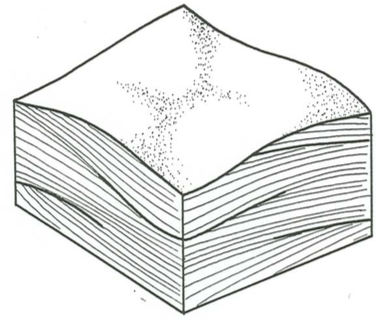
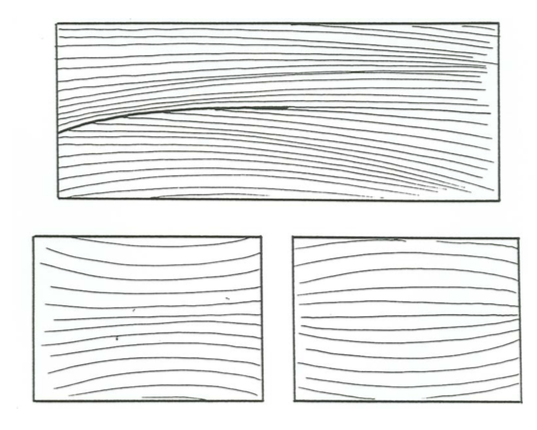
Figure (above): Sketch of hummocky cross stratification in three dimensions and three panels showing important laminae geometries in HCS. The thinner lines represent laminae in the rock, and the darker lines represent erosional surfaces that truncated underlying laminae. The stippled parts on the top surface represent lows (swales). Note that both sides of the block diagram look similar to each other. There is no obvious flow direction because the flow shifted in many directions during accumulation of the sand. The top panel on the right shows a "low-angle" truncation, characteristic of HCS. The two lower panels show pinching and swelling laminae, patterns that form with changes in deposition without intervening erosion. (from Southard's Text)
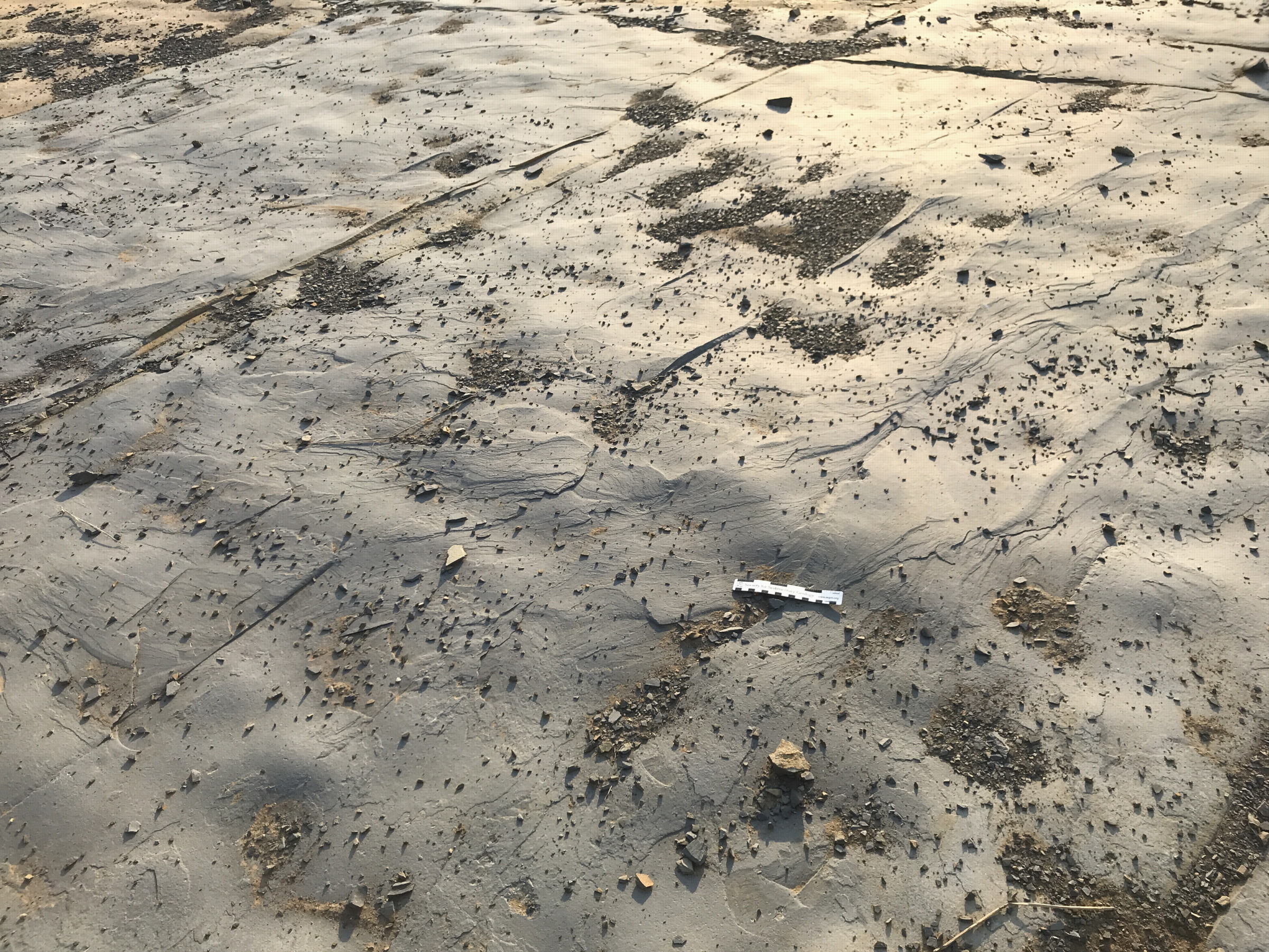
Figure (above): A hummocky surface in a quarry in Mesoproterozoic carbonates of the Chhattisgarha Basin, India. The modern gravel tends to settle into the swales on the surface.
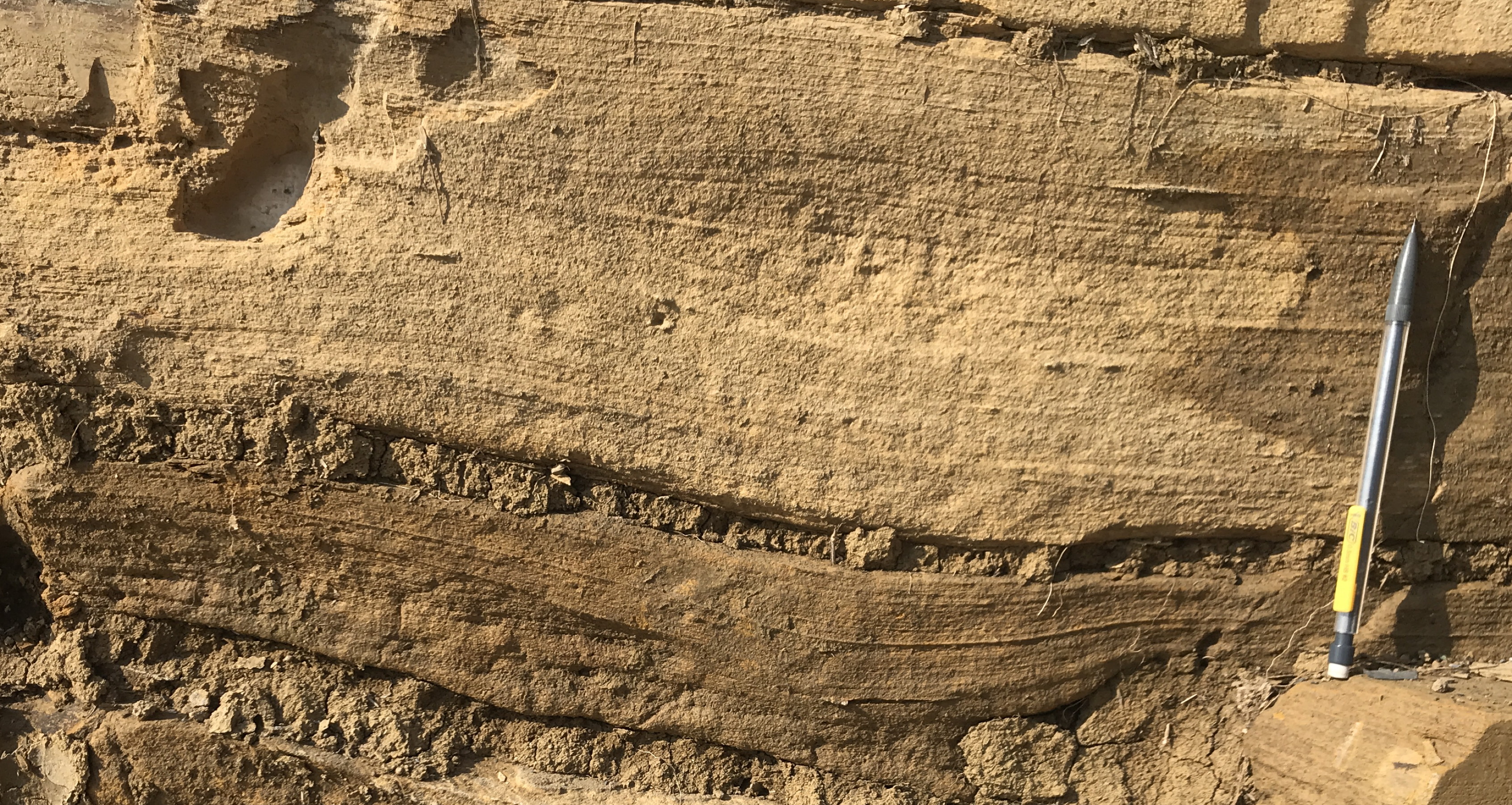
Figure (above): Hummocky cross stratification in Mesoproterozoic carbonates of the Chhattisgarha Basin, India. Note the low angle truncations of laminae in the bed near the pencil eraser and the pinching and swelling of laminae in the bed near the pencil top.
Storm Sequence
A sample stratigraphic column consists of: Mud, scoured surface, sole marks, (gravel at base), normally graded, HCS, flat laminae or wave rippled top, return to suspension settling. The details of the storm deposits vary with water depth.

Figure (above): Wave-rippled bedding plain in Mesoproterozoic carbonates of the Chhattisgarha Basin, India. This surface likely represents the end of a storm deposit. The waves shaping the surface were large, as reflected in the long wavelength of the wave ripples. Scale in middle of photo shows cm and inches.
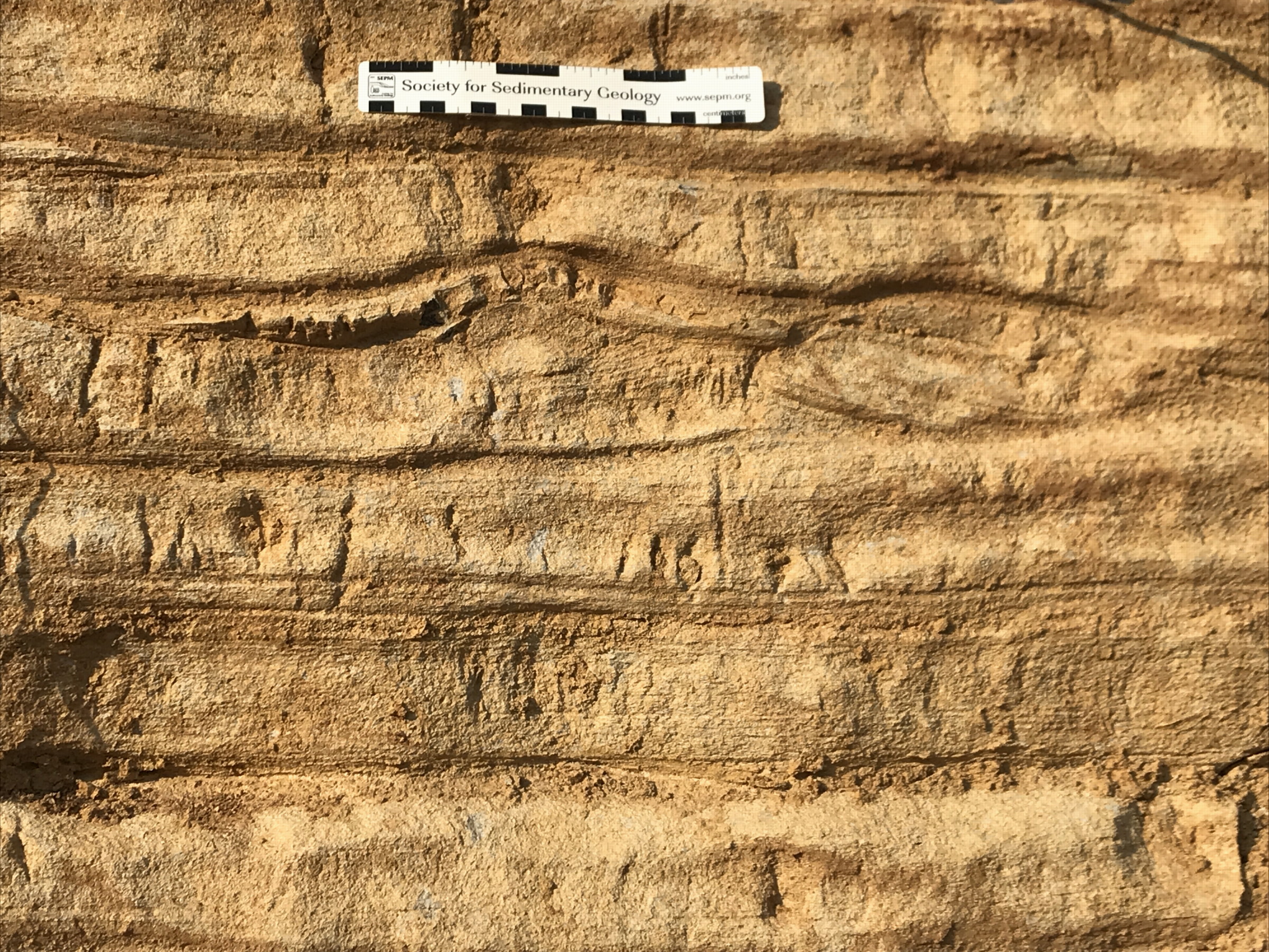
Figure (above): Wave ripples and hummocky cross stratification in Mesoproterozoic carbonates of the Chhattisgarha Basin, India. The best wave ripple cross laminae are below the scale bar. The other beds show mostly hummocky cross stratification. It is likely that each prominent layer represents a different storm deposit. There is very little mudstone between these beds because the flux of mud into this basin was very low during this interval.
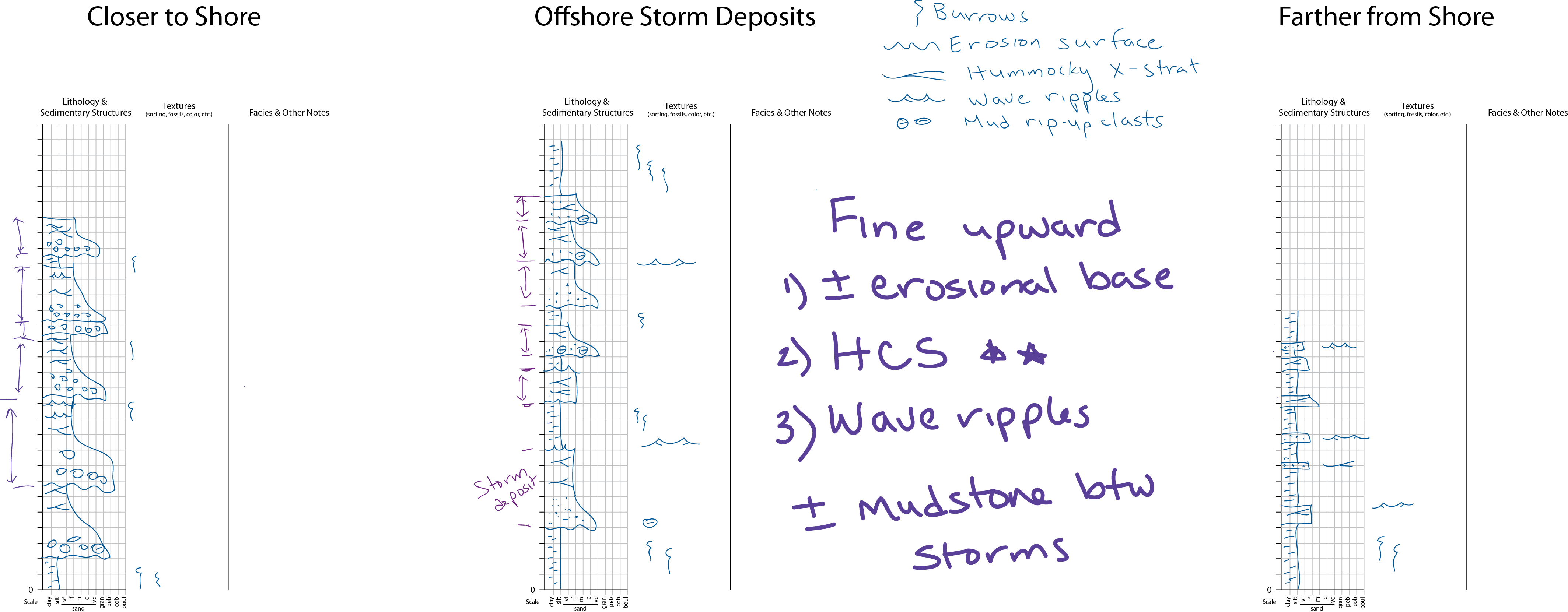
Figure (above): Example storm deposits with variations from closer to farther from store.
KEY POINT FOR STORMS
Multi-directional flows over seconds, low to high to low energy in deep water

